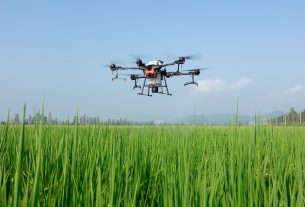Ever seen a whole field of corn look…sad? It’s a bummer when a farmer expects a great harvest, but instead gets little, or poor corn. It’s bad news for their wallet. Good planting makes all the difference. Avoid errors to get more corn. Here are the five biggest slip-ups in corn planting. You’ll also learn tips to dodge those mistakes. Get ready for healthier plants and bigger harvests!
Mistake #1: Ignoring Soil Preparation and Testing
Good soil is super important for growing corn. Think of it as the plant’s food source and home. You can’t just toss seeds in any old ground and expect miracles. You’ve got to prep that dirt!
Neglecting Soil Testing
What’s in your soil? You can’t tell just by looking at it. Testing finds out what’s there. It shows pH levels, which tell if the soil is acidic or alkaline. Corn likes a pH between 6.0 and 6.8. It also shows what nutrients are missing.
Actionable Tip: Grab a soil test kit at a garden center. Or send a sample to a lab. They will tell you what your soil needs.
Insufficient Tillage or Seedbed Preparation
Tillage means turning over the soil. This loosens it up. It helps with air and water flow. Roots need air, just like us! Proper tilling also makes a nice bed for seeds.
Actionable Tip: There are different ways to till. Conventional tillage uses plows. No-till leaves the soil alone. Reduced-till is in between. Pick what works for your soil and area.
Mistake #2: Planting Too Early or Too Late
Timing is everything! Corn needs the right weather. Plant too soon, and the seeds might rot. Plant too late, and you cut the growing season short.
Planting Before Optimal Soil Temperatures
Corn loves warm feet. The soil should be at least 50°F (10°C) when you plant. Cold, wet soil is bad. Seeds can rot before they even sprout.
Actionable Tip: Stick a soil thermometer in the ground. Check it for a few days. If it stays at 50°F or higher, you’re good to go!
Misjudging the Last Frost Date
Frost can kill young corn plants. It’s like a surprise winter attack. Check when the last frost usually hits your area.
Actionable Tip: Ask your local farm extension. They have the info you want. Look at weather records for the past years. Plant after the last frost date, just to be safe.
Mistake #3: Incorrect Seeding Depth and Spacing
How deep you plant and how far apart matters. Too deep, and the seedlings struggle to reach the surface. Not deep enough, and they dry out.
Planting Seeds Too Deep or Too Shallow
The perfect depth depends on the soil. Sandy soil needs deeper planting, around 2 inches. Heavier soil needs shallower planting, about 1 inch.
Actionable Tip: Check your planter settings. Make sure it’s dropping seeds at the right depth. Test a row or two first.
Improper Plant Population Density
Plant population is how many plants per acre. Too many plants, and they fight for food and light. Not enough plants, and you don’t get a great yield.
Actionable Tip: Seed companies know their stuff. Follow their guidelines. They have plant populations for each corn type.
Mistake #4: Neglecting Seed Quality and Treatment
Not all seeds are created equal. Some are strong and healthy. Others are weak or damaged. Seed treatments protect them from bad things.
Using Low-Quality or Damaged Seeds
Buy seeds from a trusted seller. Good seeds sprout fast and grow strong. Avoid cheap, no-name brands.
Actionable Tip: Do a quick germination test. Put some seeds on a wet paper towel. Keep them warm. See how many sprout. If less than 80% sprout, find different seeds.
Skipping Seed Treatments
Seed treatments are like armor for seeds. They protect against bugs and diseases in the soil.
Actionable Tip: Ask your seed seller what treatments are on the seeds. Pick what protects against your local pests and diseases. Fungicides fight fungus. Insecticides fight bugs.
Mistake #5: Ignoring Weed and Pest Control
Weeds steal food and water from your corn. Pests eat the plants. You have to fight back!
Inadequate Weed Control
Weeds are bullies. They take over if you let them.
Actionable Tip: Use herbicides before and after planting. Hoe or till between rows. Get rid of weeds early.
Pest Infestations
Corn borers and rootworms are bad bugs. They hurt the corn.
Actionable Tip: Walk the field often. Look for pests. Spray insecticides if needed. Some bugs eat other bugs. That’s biological control.
Conclusion
Don’t make these mistakes! Soil prep, timing, depth, seed quality, and pest control are key. Plan ahead, prepare well, and work smart. If you put these tips to work, you can expect bigger corn harvests and happier farming.
Share this article with your farming friends. Got any corn growing tips of your own? Please leave a comment below.



